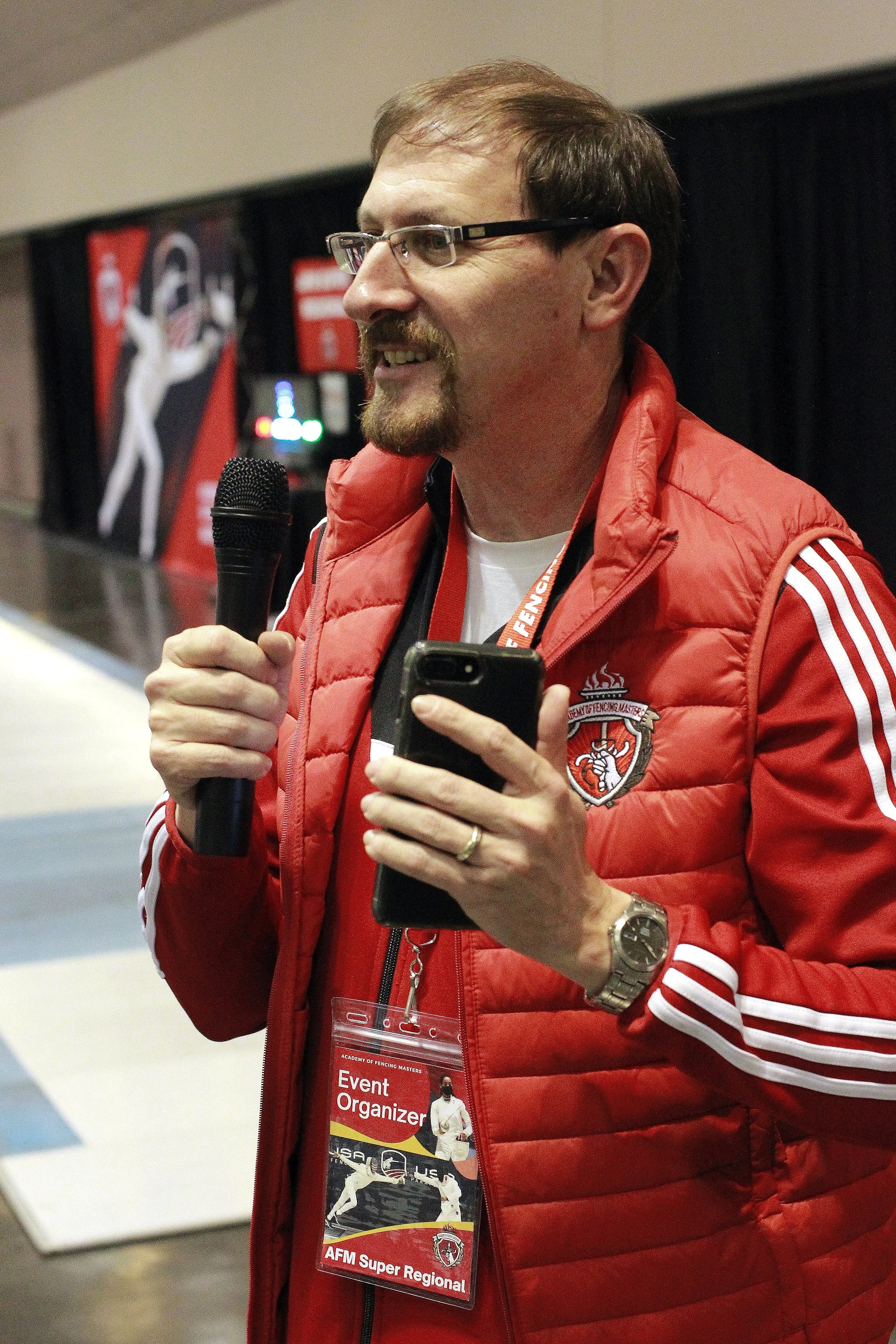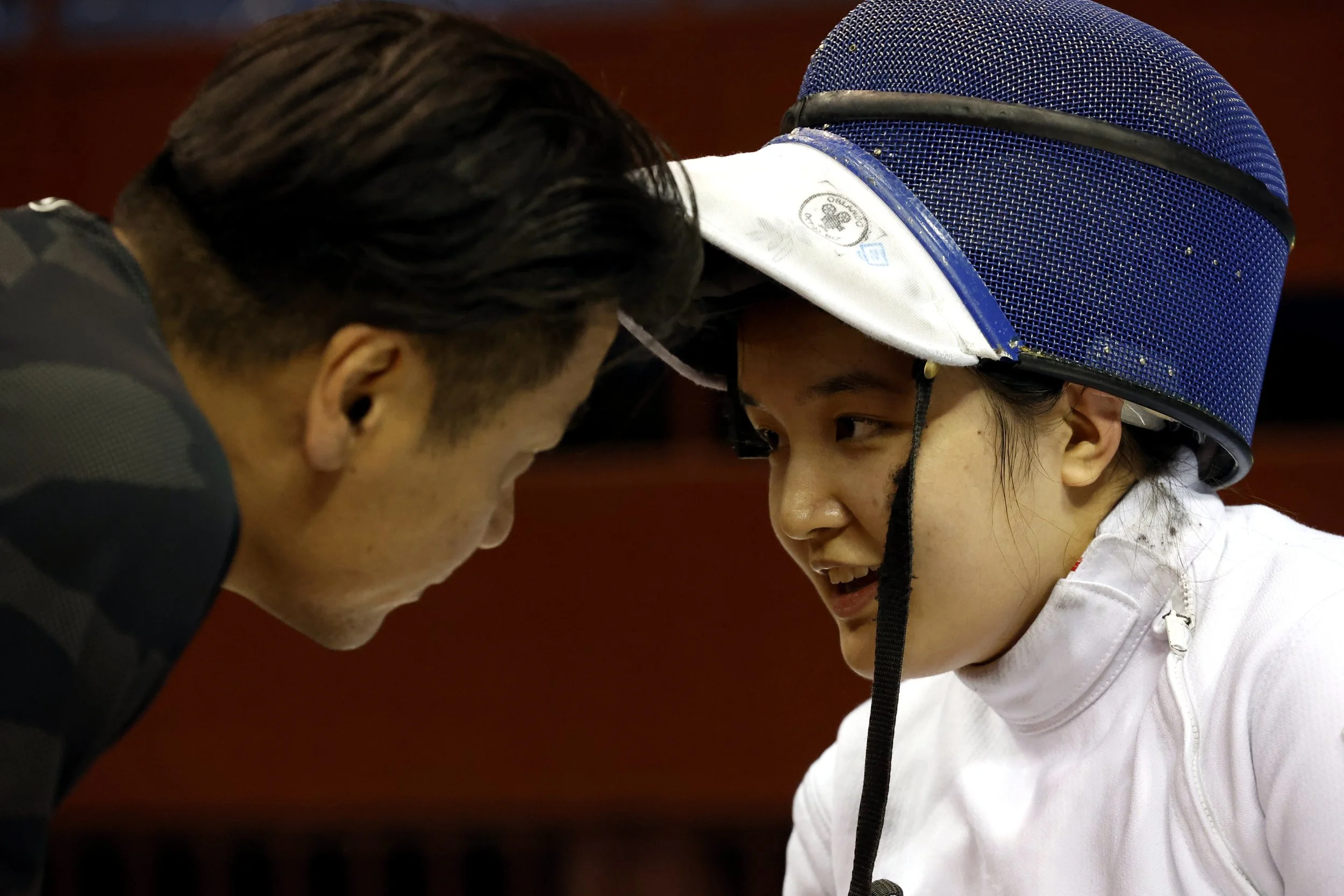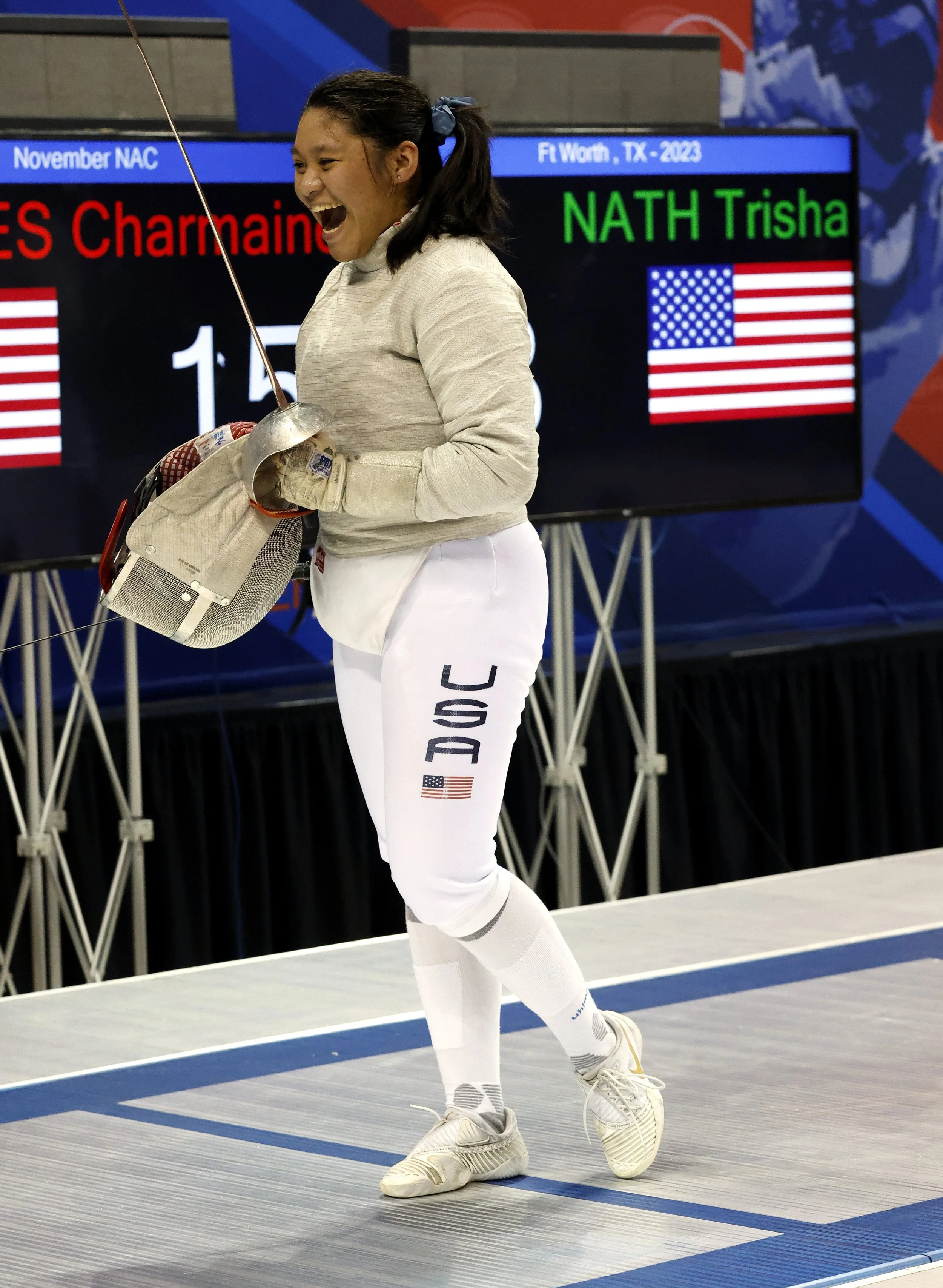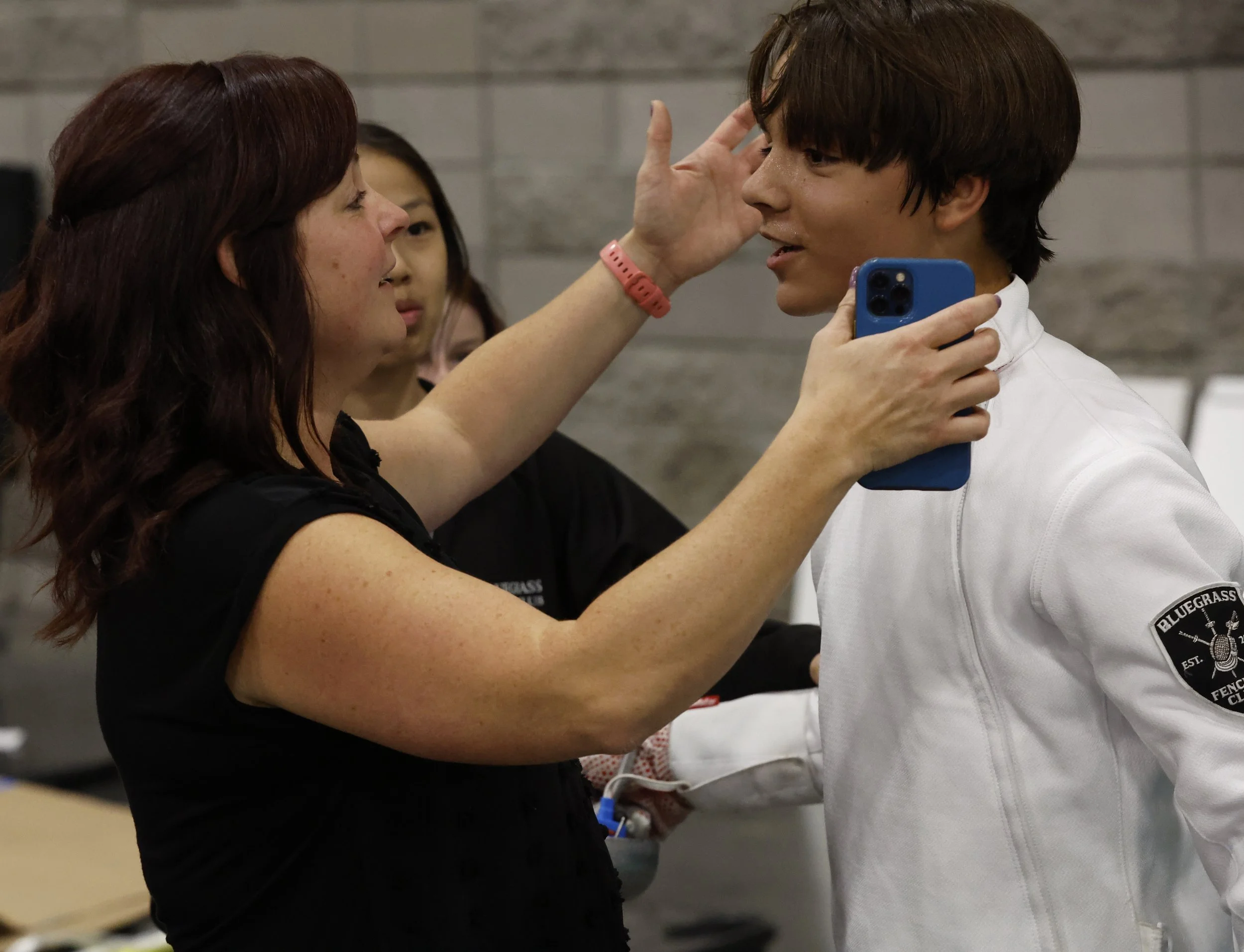How Hard Should Parents and Coaches Push Young Fencers?
Igor Chirashnya
Editor’s Note: We are pleased to welcome Igor Chirashnya as our new “Parents’ Corner” columnist. Igor is the co-founder with his wife, Irina, of the Northern California-based Academy of Fencing Masters club. He has produced a very well-received and popular blog on his club’s website and agreed to share some of the articles as well as author some original material with American Fencer. Much of his written work centers around issues with young fencers, coaching and parenting, and we look forward to publishing and sharing these insightful articles with you.
———————————————————————————
December 2023
As parents, we want our kids to be successful. It’s our job to make sure they have all the tools they need to reach their full potential and to be as fulfilled as they can be. That goes for fencing, but it also goes for school and other activities.
There’s a fine line between pushing a child hard enough that they can reach that potential and pushing them past it. It’s not always easy to tell the difference, but parents can improve their odds by understanding how kids develop and what positive pushing looks like.
Pushing too hard on kids in youth sports can cause not only physical damage, but also mental struggles. These can become long-term issues, leading to the exact opposite outcome of what the parents want. Not only that, but it can be damaging to the relationship between parents and children.
Parents need to be encouraging, not overbearing. The same goes for coaches, who need to offer support and structure without charging-past the limits of kids’ ability.
A strong internal drive. To succeed in life, kids need to develop a strong sense of purpose and an internal drive that will carry them through difficult times. Practicing is hard, especially when you’re tired or mentally worn-down by a loss.
No one is born resilient. Kids learn to be resilient because someone has been there to teach them how to be that. There’s a saying in parenting that is apropos here – kids learn to self-soothe because they were consoled by someone else countless times before. This is our job as fencing parents. We need to be the ones there to build them up a thousand times so one day they will be so strong that they don’t need us to build them up.
This happens in small ways at first, and it must be built over time. You cannot hammer into a young athlete a sense of resilience without building them up in strong ways all along the way. It happens over time. It happens with years of practice.
A strong internal drive can only be built by first letting a child be independent, and then supporting them with positive reinforcement and encouragement. Pressure will tamp-down that drive and put out the light of passion.
Both coaches and parents can support the development of a strong internal drive by giving kids guidance, then stepping back and allowing them to do it on their own. No child can develop independence when an adult is always there to hold them accountable. They must figure out how to hold themselves accountable.
This will take time, and often we’ll see kids fall and fail while they’re working through tough things. It’s hard for us to watch this sometimes, but we must let them make mistakes. Fencing already teaches kids to come back from losing a point or a match. It’s a fantastic teaching tool, because resilience is baked-in to fencing if we allow it to be.
Fencers tend to be highfliers, but not always. We often see kids in fencing who are high achievers all around. They’re the kids who get good grades, who are active in lots of activities in school, and who in general want to go the extra mile. This isn’t an absolute, but it’s definitely a trend in fencers – especially competitive fencers.
Competitive fencing takes a certain amount of planning and discipline. Kids must work not only on their forms and personal expressions, but they also must learn to be responsive to their opponent. This sport involves a great deal of mental agility and physical development, so those kids who are successful and passionate about it tend to be focused and goal oriented already.
Sometimes we see parents who want their kids to be those highfliers, but the kids aren’t as passionate about it. It’s understandable because parents can sometimes see potential in their children that kids don’t see. It’s the benefit of perspective and experience.
The problem can come when parents push harder than is warranted. The gap between what is possible for a child and where a parent thinks they should be is too great and kids can’t cross it. The “tiger parent” trope is a cliche in parenting for a reason, and that’s because it’s all too common.
The zone of Proximal Development. A fantastic concept that can help parents and coaches know how much to push young fencers is through the concept of the “zone of proximal development,” or ZPD. This is a theory from educational psychology that offers a guideline for where learning can happen and where it’s impossible. Essentially, the ZPD is the “sweet spot” where something is hard enough to be engaging, but not so difficult that it’s impossible to accomplish.
There are three levels in ZPD:
Things a learner can do without help
Things a learner can do with help
Things a learner cannot do even with help
That middle level is where learning and growth happen. It’s where we want to keep our fencers to help them maximize their potential and continue on the path.
In fencing, we can think of “help” as support. What can a fencer accomplish with good-quality strip coaching and strong parental support? It’s more than they could accomplish on their own without either of those things. They will perform better in competition and their skills will grow faster with strong teammates who push them on the strip and encourage them to develop their skills.
When we bolster young fencers with all kinds of structure and lots of positivity in their environment, they can get to those goals much faster than if we just expect them to do it on their own.
Parents and coaches who push too hard often keep young athletes in #3, which is a frustrating and discouraging place to be as it leads to frequent failure. Even if they can scrape by and rise to some of the expectations on the edge of their abilities, this will wear them down emotionally and mentally.
ZPD and competitive fencing. Let’s go over an example in fencing competition. For a 12-year-old fencer who is going to their first fencing competition, we would not expect them to start off by going to a NAC. It’s clearly not appropriate for a new competitor to go to a national competition right out of the gate, correct? However, if they’ve been fencing for more than a year and have previous experience in competitive sports, then a competition just within their fencing club might not be challenging enough for them, either.
We want to find a place where the fencer will be challenged enough to be really invested in the competition. In this case, a USA Fencing-sanctioned regional competition might be just the thing for them. This will push them hard enough to want to prepare, but not so hard they won’t be able to handle it.
This concept extends to fencers who have competed at a very high level. If a fencer has been training for three years and competed in many regionals in a previous season where they performed well, just missing the podium, then it’s reasonable for them to plan to run at qualification for fencing at Summer Nationals this season.
Going back to local competitions or taking-on just one regional competition would be too little for them, and planning to get to the podium at Nationals would also be a bar that’s likely too high. There are lots of factors to consider, of course, but at the very least they should look at their options and talk about it with the coach.
Thinking of every goal in terms of the ZPD is a great way for parents and coaches to set goals and place expectations for fencers. When a young fencer fails to meet a goal and an adult in their circle immediately feels the need to push them harder, it’s worthwhile to stop and evaluate whether the goalpost was set too far ahead.
The worst-case scenario. It’s an unfortunate truth, but we’ve seen young people who loved the sport once come to resent it because of all the pressure that they’re put under.
Mental exhaustion and burnout are motivation killers. Training and competition are already draining and can make it difficult for fencers to continue, but then when you add parental pressure it can become overwhelming. Though kids are strong and resilient, that can only go so far.
The worst-case scenario isn’t even that a child quits fencing because of pressure, it’s that the relationship between parent and child is damaged. Competitive fencing and college applications are only one small part of the bigger life story! The hope is that we will have a fruitful and fulfilling relationship with our kids for decades after they move out and start making their own decisions.
It’s exhausting to try to live up to a parent’s expectations when you feel like you’ll either never be able to meet them because they’re too high, or that you’ll never be able to meet them because they keep on shifting further into the future. In either scenario, it’s damaging to the bond between parents and kids.
How to refocus your standards in fencing. Goal setting must be focused not on something that a child can achieve – getting a gold medal at Summer Nationals, making it onto a Division I college fencing team or whatever it might be. Instead, goal setting should be focused on process over product.
A child can control the amount of time they practice. They can control how much sleep they get or how often they practice at home. A young fencer can control their diet and their open fencing time. They even have some control over how many competitions they go to and how closely they listen to their coach.
A young fencer cannot control whether they make the podium. In theory, if they do all the right things, they’ll make it there eventually, but they can’t strictly control that.
This is why parents must put their focus on supporting fencers in doing all that they can control, rather than expecting them to achieve things not in their hands. Praise them for doing all the things they can do, and this is how you’ll positively influence their trajectory.
Of course, kids are going to make mistakes. The tween and teen years, which are when competitive fencing for youth fencers really ramps, just so happens to coincide with some hard adolescent development years. It’s easy for fencing to become a focus of the emotional energy between parents that is already going on and that really has nothing to do with fencing at all. If there’s a lot of pressure on fencers coming from parents that’s not necessary, then that can exacerbate that tension.
Supported rigor is the answer. Our young fencers can often accomplish so much more than they realize. It’s so important for us to understand we must believe in them and show them they can do those great things, not just expect them to be able to do them automatically.
We do our kids a great service when we put ourselves in their shoes and remember what it was like to be their age. The swirl of adolescence is already challenging, and when parents and coaches start to see young fencers as only being an object that must do this or do that, kids know it. Instead of looking at it from a cold and focused perspective, be warm and understanding with young fencers who are trying to figure out their ways in the world.
Here’s the takeaway from all of this: support young fencers in their goals, facilitate their success and then trust that your parenting and their personalities are strong enough to get them where they need to go.
Photos: Serge Timacheff/2023





